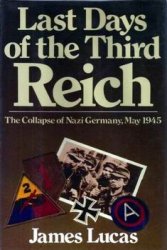King of Cyprus, titular king of Jerusalem (1359-1369), and leader of a crusade that captured the port of Alexandria in Egypt in 1365.
The son of King Hugh IV of Cyprus, Peter succeeded his father on the throne in preference to his nephew (also named Hugh), the son of his deceased elder brother. It would seem that Peter was crowned king in 1358, about a year before his father’s death, in what was presumably an attempt to preempt the younger Hugh’s challenge. At the outset of his reign Peter took steps to safeguard from Turkish depredations the shipping lanes linking Cyprus to the West, and it was with this program in mind that he occupied the Anatolian ports of Gorhigos (mod. Korykos, Turkey) in 1360 and Attaleia (mod. Antalya, Turkey) in 1361.
In 1362 Peter set off for the West to establish his rights to the throne beyond doubt at the papal court. On his arrival at Avignon in 1363 he and his nephew were reconciled, and it was there that Peter took the cross. It could be that Peter’s enthusiastic espousal of the crusade that was then being prepared was inspired, at least in part, by the need to gain the pope’s support in his dealings with his nephew. He then
Peter of Blois (d. 1211)
Embarked on a lengthy tour of Europe to raise support for the crusade, during which time the king of France, John II, died, thereby effectively leaving Peter as the leader of the expedition.
It was not until June 1365 that Peter and the crusaders set out from Venice. At Rhodes (mod. Rodos, Greece) they rendezvoused with the forces from Cyprus, and the combined fleet sailed to Alexandria, which they captured and partly destroyed. Peter appears to have hoped to retain control there, but to no avail, and he and his forces withdrew to Cyprus. Peter was now at war with the Mamluk sultanate, and he led further attacks on Mamluk ports during 1367. Propaganda emanating from both Peter himself and the papal court insisted that his whole aim in launching this attack was to win Jerusalem for Christendom once more, but when Peter turned to negotiation, it seems that he was more concerned to obtain favorable trading concessions for his subjects. It may be wondered whether commercial advantage had been his main aim all along. In the event the financial strain of the war took its toll, and when Peter returned from a largely unsuccessful second visit to the West toward the end of1368, his violent and unpredictable behavior toward those around him led directly to a palace coup d’etat in which his own brothers were implicated. Peter was stabbed to death by his own vassals in January 1369, and peace with the Mamluk sultanate was eventually reached in 1370.
-Peter W. Edbury
Bibliography
Bliznyuk, Svetlana, “A Crusader of the Later Middle Ages:
King Peter I of Cyprus,” in The Crusades and the Military Orders: Expanding the Frontiers of Medieval Latin Christianity, ed. Zsolt Hunyadi and Jozsef Laszlovszky (Budapest: Department of Medieval Studies, Central European University, 2001), pp. 51-57.
Edbury, Peter W., “The Crusading Policy of King Peter I of Cyprus, 1359-1369,” in The Eastern Mediterranean Lands in the Period of the Crusades, ed. P. M. Holt (Warminster, UK: Aris & Phillips, 1977), pp. 90-105.
-, “The Murder of King Peter I of Cyprus (1359-1369),”
Journal of Medieval History 6 (1980), 219-233.
-, The Kingdom of Cyprus and the Crusades, 1191-1374
(Cambridge: Cambridge University Press, 1991).
Richard, Jean, “La revolution de 1369 dans le royaume de Chypre,” Bibliotheque de l’Ecole des Chartes 110 (1952), 108-123.




 World History
World History









